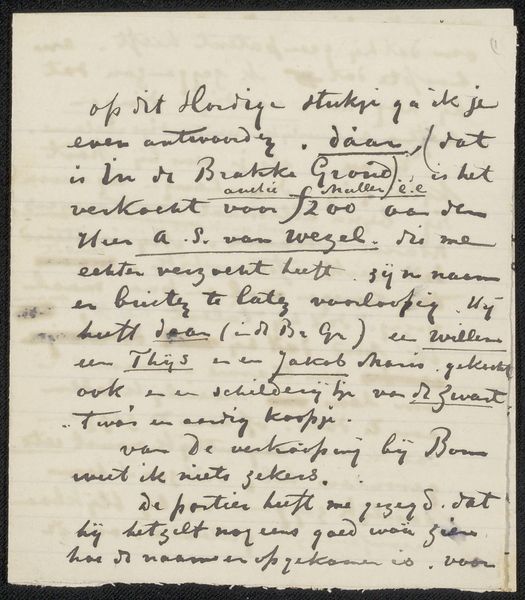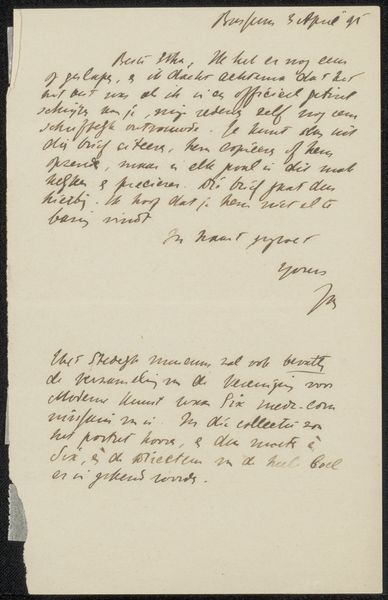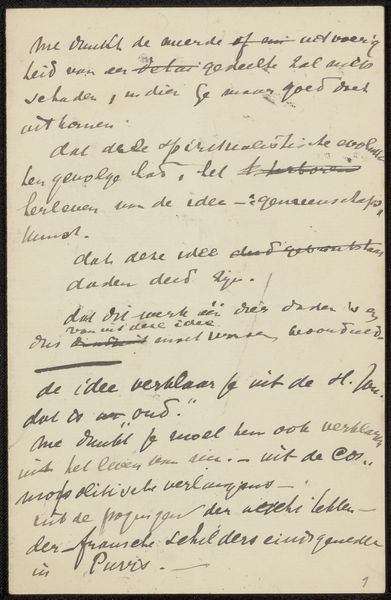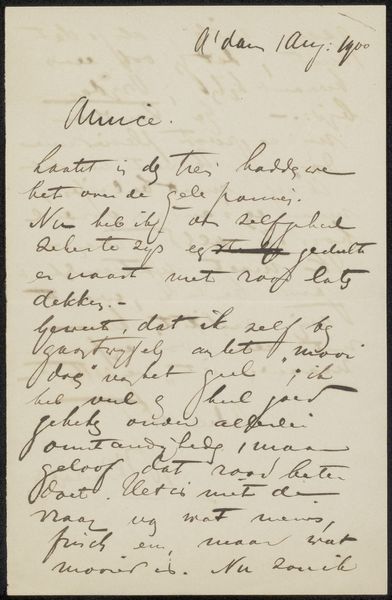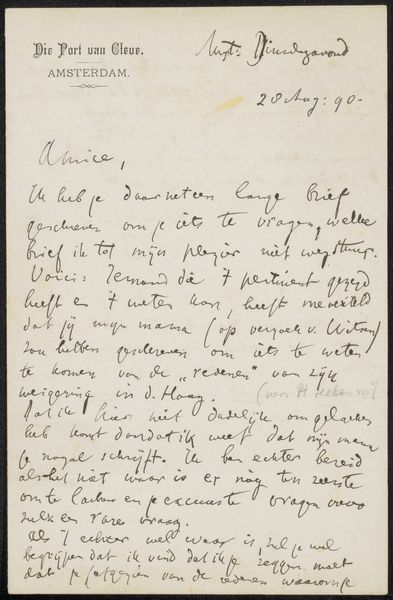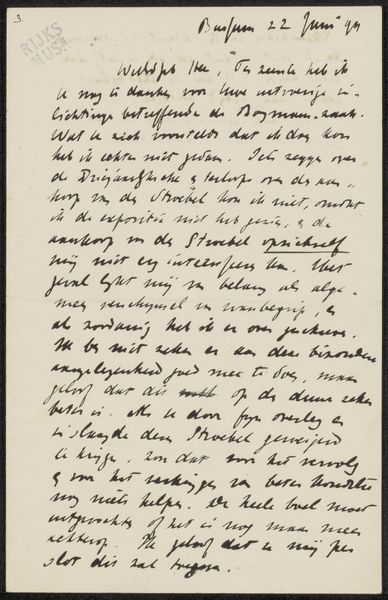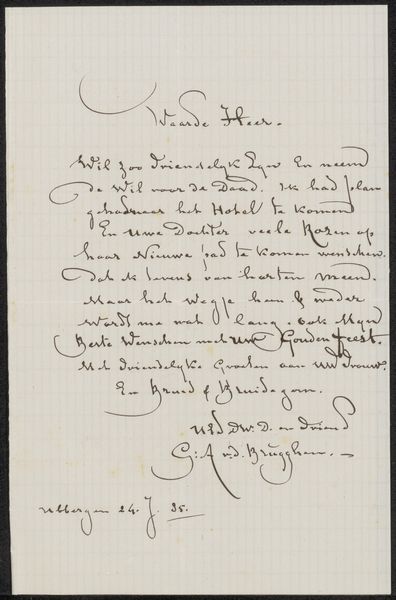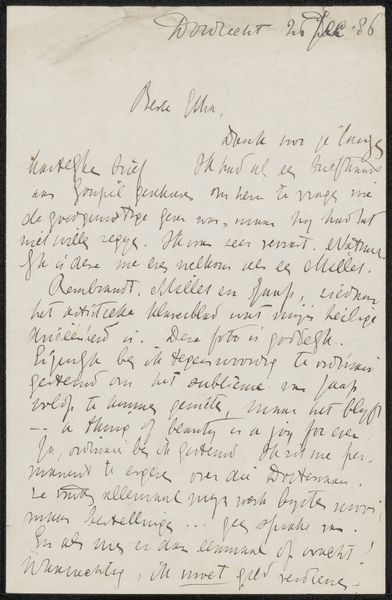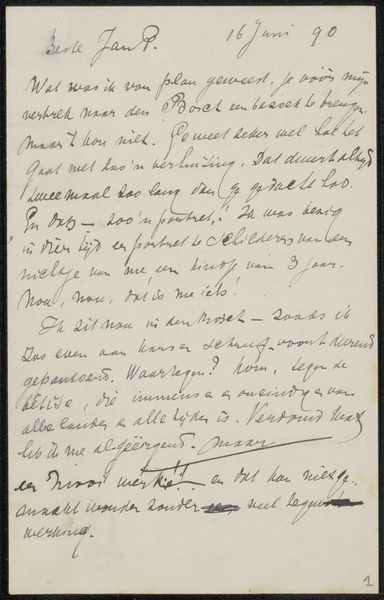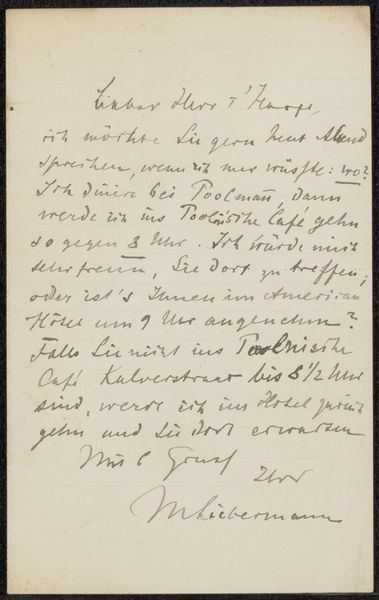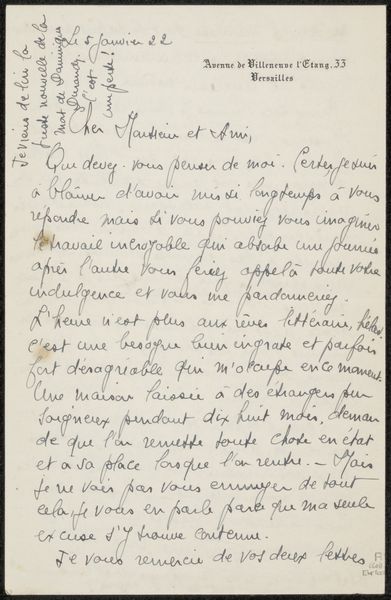
drawing, mixed-media, paper, ink, pen
#
drawing
#
mixed-media
#
hand-lettering
#
old engraving style
#
hand drawn type
#
hand lettering
#
paper
#
personal sketchbook
#
ink
#
hand-drawn typeface
#
ink drawing experimentation
#
intimism
#
pen-ink sketch
#
pen work
#
sketchbook drawing
#
pen
#
genre-painting
Copyright: Rijks Museum: Open Domain
Curator: Look at the delicacy of this piece, Isaac Israels’ “Brief aan Jan Veth” from 1920, currently held at the Rijksmuseum. It is made using pen and ink in mixed media on paper. It feels incredibly intimate, doesn't it? Editor: Yes, the handwriting itself evokes a personal touch. I imagine the artist hunched over a desk, the nib scratching across the page. The physical act of writing becomes performance. It looks as though he were in a real hurry. Curator: Absolutely. It speaks volumes about the exchange of ideas among artists and intellectuals of the time. Jan Veth was a prominent critic and artist himself, deeply embedded within Amsterdam’s art circles. This letter is essentially a document, perhaps part of a larger network of correspondence which helped circulate aesthetic views. Editor: Consider also the accessibility of letter writing versus painting during this period. Letters served not only to exchange information, but also as crucial mechanisms for intellectual collaboration among networks of artist communities that supported Israels' endeavors. We need to acknowledge labor to unveil these art historical gems. Curator: Indeed. Furthermore, it emphasizes the very handcraft aspect often dismissed as secondary. Look at the careful looping and the consistent pressure. The artistry is present not just in what he’s writing, but how he’s presenting his thought. It brings to light, too, the public role that private exchanges can inhabit, since letters from significant cultural figures inevitably get opened up to wider audiences later on, and change the public understanding. Editor: Precisely. This piece blurs the boundaries between art, craft, and social documentation, reminding us of the broader contexts in which art is produced. Curator: It challenges, really, what constitutes 'high art' when such care and artistry go into even ephemeral material such as personal correspondence. It serves as a potent reminder of how history itself unfolds from the simplest of everyday artifacts, wouldn't you agree?
Comments
No comments
Be the first to comment and join the conversation on the ultimate creative platform.
